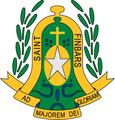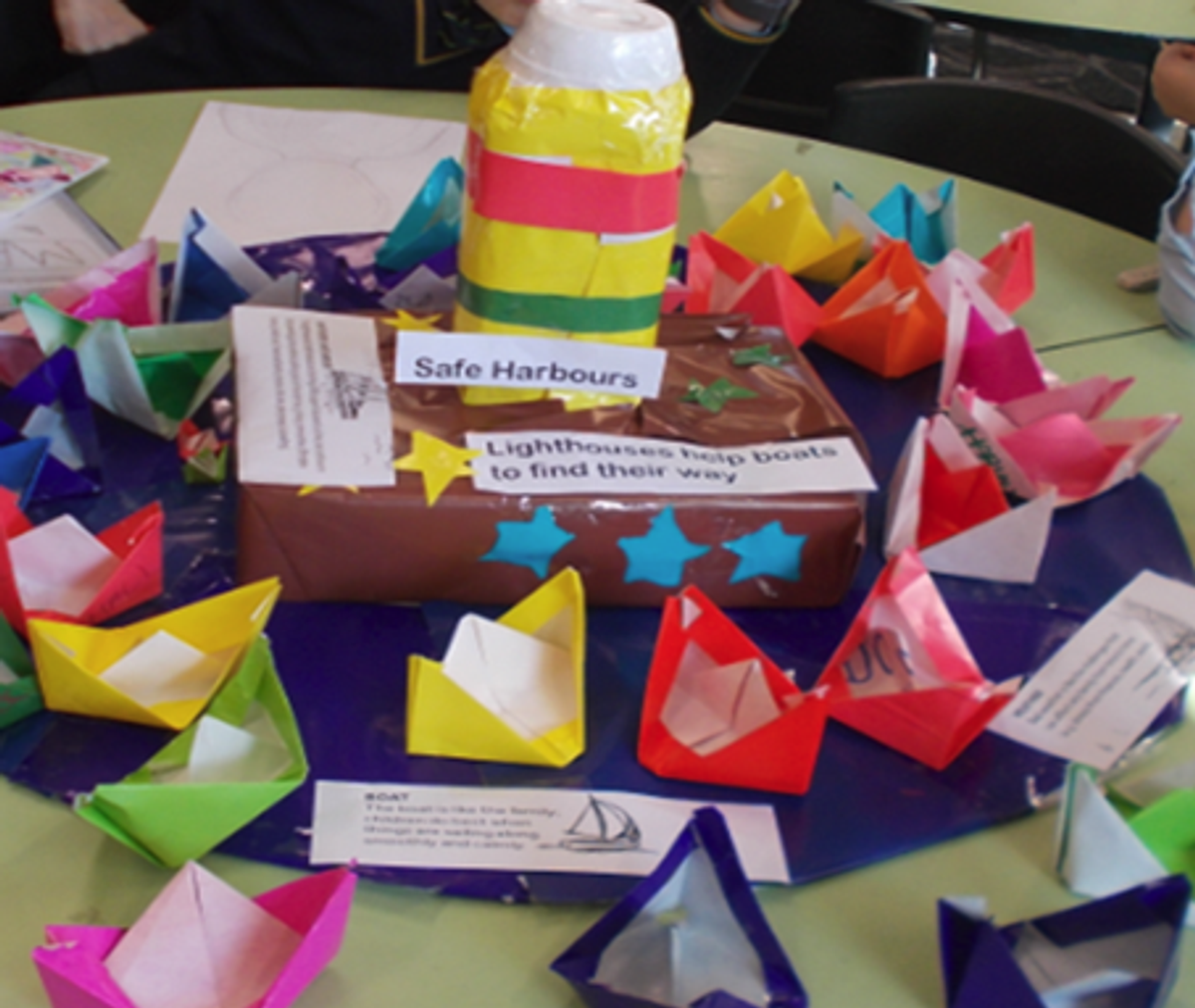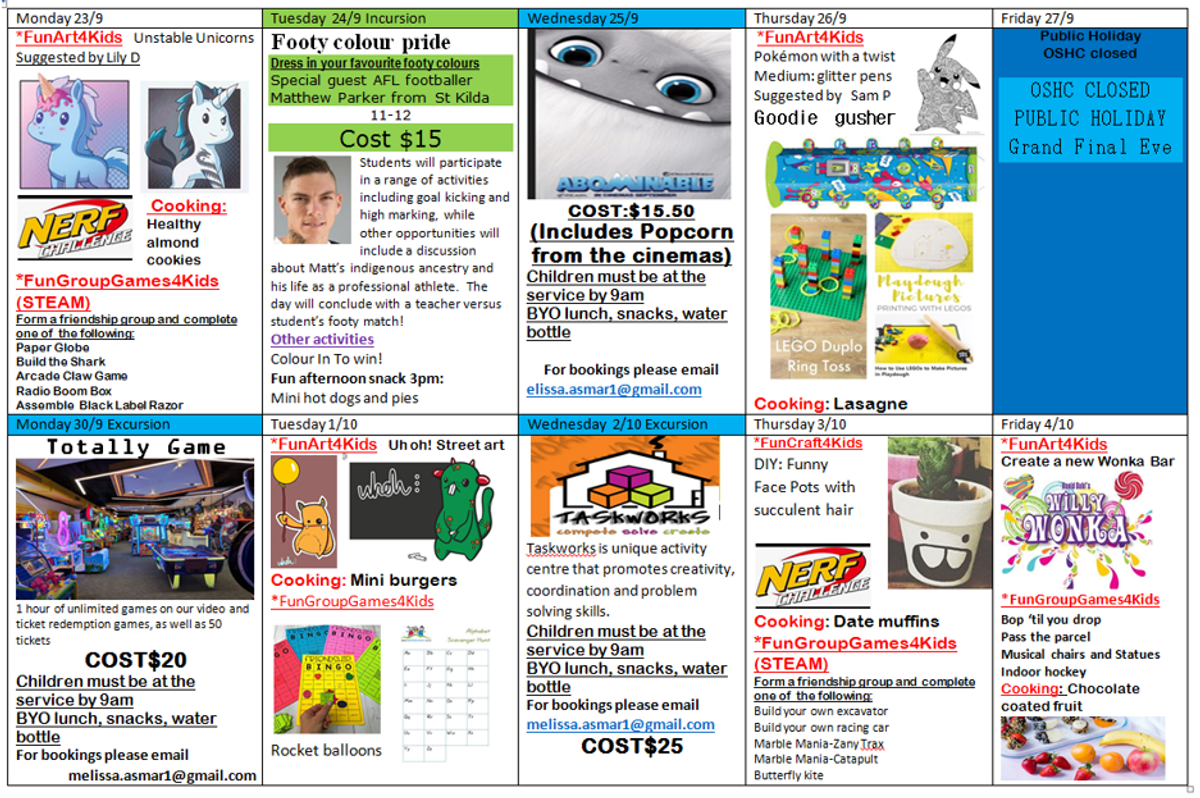Outside School Hours Care

Bookings Information
Casual Bookings/Cancellations/Adjustments please call 9592 0994 directly. Email: melissa.asmar1@gmail.com
EMAIL NOT TO BE USED TO CHANGE DAILY ATTENDANCES
EMAIL TO BE USED for changing permanent bookings, making advanced bookings/cancellations (ie holiday program, school closure days), account queries, addressing special needs, incidents that need clarification, and the like. Emails are not checked prior to a session as administrative duties are addressed off site and away from the service as our priority lies with the active supervision of children, their development and wellbeing.
Having said all of the above, if children ever find themselves confused, not knowing where they're supposed to be, please have a "back up plan" by stating they can always go to after care and together we can resolve their situation. This is an important aspect of children’s “belonging, being and becoming” which involves them learning independence, coping skills and OSHC Educators available to children for support and to provide a secure base for children as needed. (NQS 5 Circle of security)
Child Care Subsidy balancing is underway
Throughout the year, Centrelink pays your Child Care Subsidy (CCS) based on the details you’ve given them. At the end of the financial year, they balance your CCS to make sure you received the right amount.
Centrelink is balancing CCS for the 2018–19 financial year. Your CCS won’t be balanced straightaway. It can take some time.
Here’s how Centrelink gets to your outcome.
1. You confirm your income
You need to confirm your family’s income for the 2018–19 financial year before Centrelink can balance your CCS. You (and your partner) do this by lodging your tax returns with the Australian Taxation Office.
If you don’t need to lodge a tax return, you need to tell Centrelink by doing an ‘Advise non-lodgement’ with them. You can do that either in your:
- Centrelink online account through myGov, or
- Express Plus Centrelink mobile app.
2. Centrelink works out your CCS entitlement
Once you’ve confirmed your family income, Centrelink will work out how much subsidy you were entitled to for the financial year. They compare that amount to how much you were paid throughout the year.
Centrelink then makes any necessary adjustments. This includes adding CCS withheld throughout the year. Centrelink withholds 5% of your weekly CCS during the year as a default.
If you were paid too much CCS at any time during the year, Centrelink will also factor that in. This may happen if you had a change in your family’s circumstances or if your family income estimate was lower than your actual income.
3. Centrelink tells you your outcome
Once Centrelink has considered all of these factors, they send you a letter with your outcome. The letter will outline how they’ve worked out your outcome.
There are three possible outcomes:
- A top-up payment – you don’t need to do anything else. Centrelink will pay this money to your bank account you’ve given them.
- No further action – you received the correct amount of CCS during the year.
- An overpayment – you may need to take action to pay back any money you owe. If you don’t set up a payment plan or pay the money back in full by the due date, Centrelink may reduce your future CCS to pay off the debt. Centrelink will work with you to set up a repayment plan you can afford.
We encourage families to visit www.humanservices.gov.au/balancing. There is more information on the Centrelink website to help families understand the balancing process.
National Child Protection Week
The National Association for Prevention of Child abuse and Neglect (NAPCAN) are Coordinating National Child Protection Week and promoting the Play Your Part strategy to invite all Australians to play their part to promote the safety and wellbeing of children and young people. “Protecting children is everyone’s business.”
NAPCAN focuses on children and what they need to thrive, and the importance of interaction with parents and caregivers to child development. This year’s theme is a ‘navigating waters’ metaphor where boats represent families/parenting, weather/hazards represents the circumstances that can affect us all, and lighthouses and safe harbours represent the support that we all need.
At our service we create safe harbours for children by putting them first. (Child focused). Positive interactions and guidance are key to promoting safety and wellbeing. As such, Educators and children are using this opportunity to develop a 3D model/display of the navigating waters theme by constructing a display of paper boats and a 3D lighthouse.
Furthermore, children need us to help build safe harbours by:
• Taking time out to listen to what they have to say.
• Being kind and supportive to their parents.
• Being friendly and including their families in our communities.
• Speaking up if we see something that harms children.
• Thinking about how all decisions affect children and families.
• Advocating for all parents to have easy access to the support they need.
St Finbar’s September /October Holiday Program
The Holiday Program is now out. Holiday program ACTIVITIES whilst planned are flexible with consideration for active and passive time and seasonal changes. We aim to provide opportunities for children to relax as well as continue their learning journey through varied and interesting interactions with each other and community partners.
Hope to see you there!
September / October Holiday Program link



